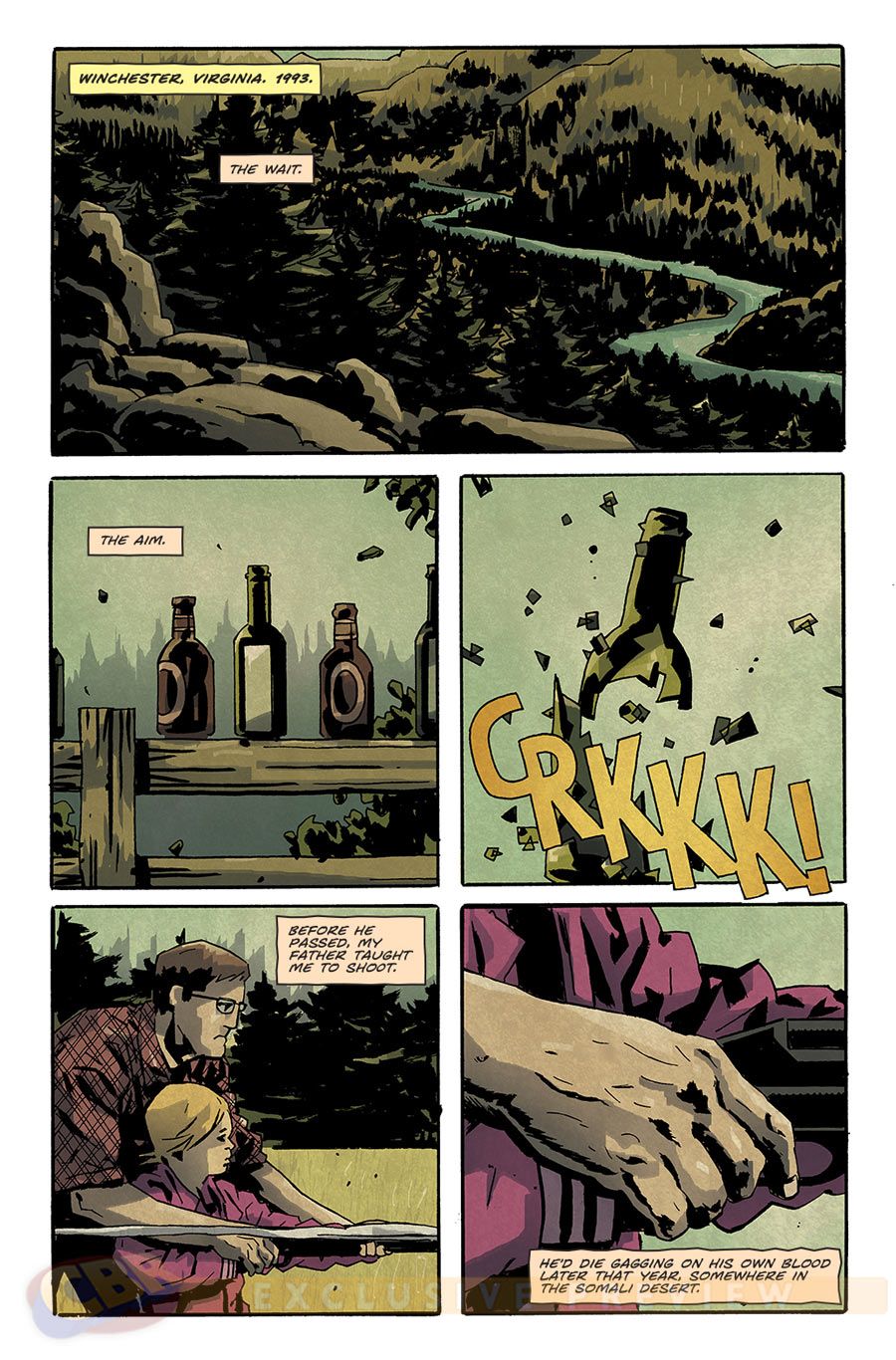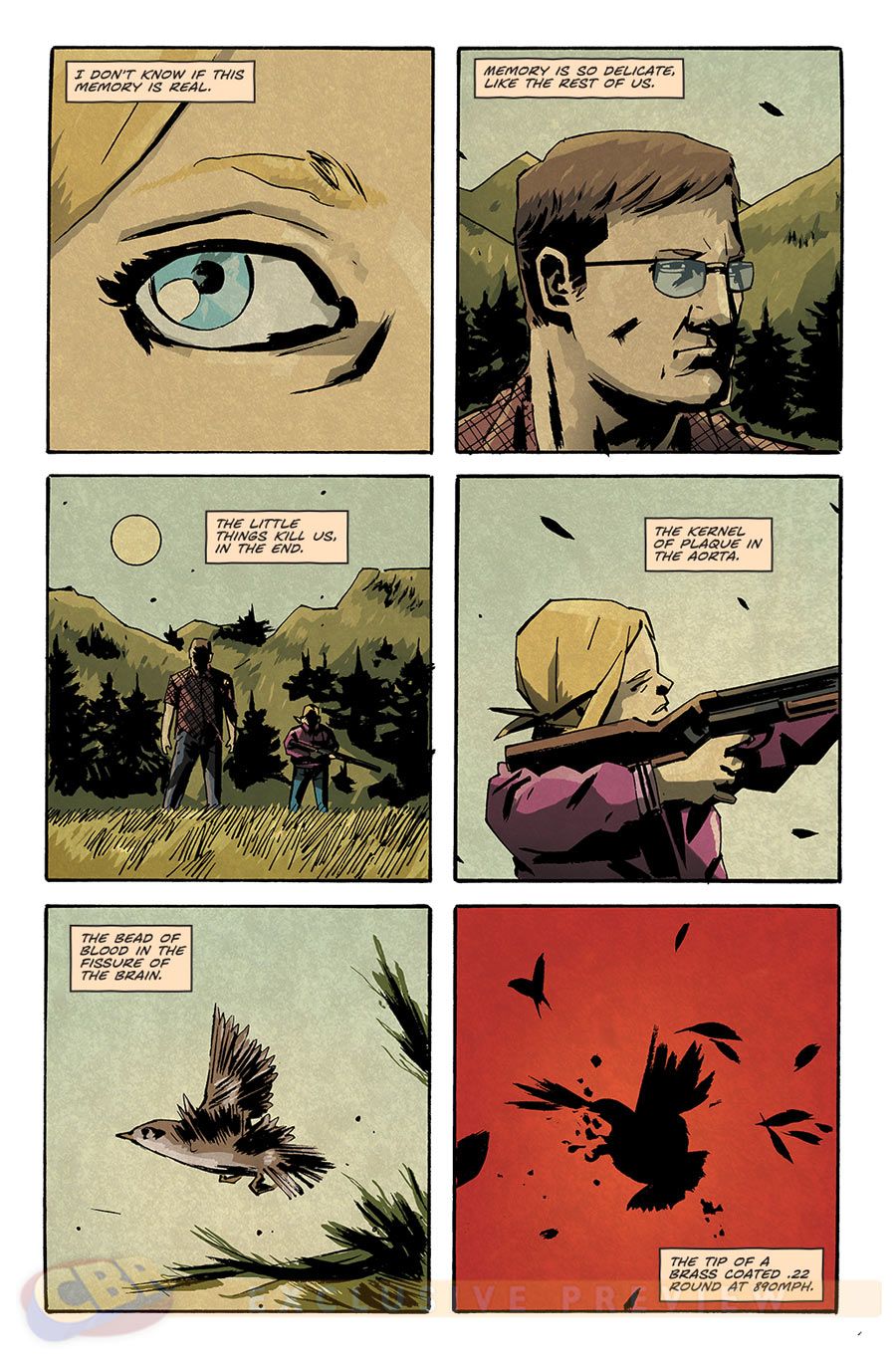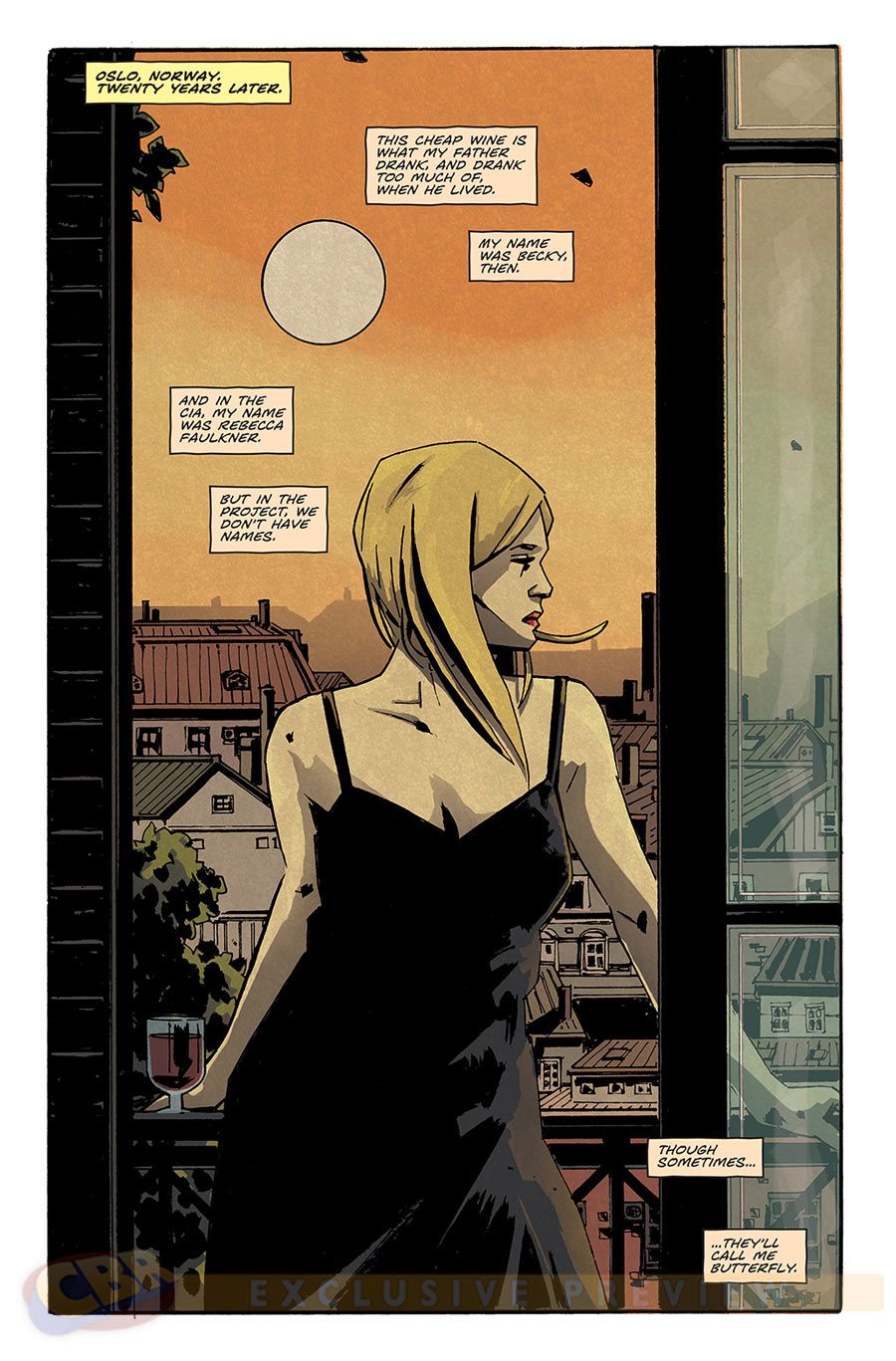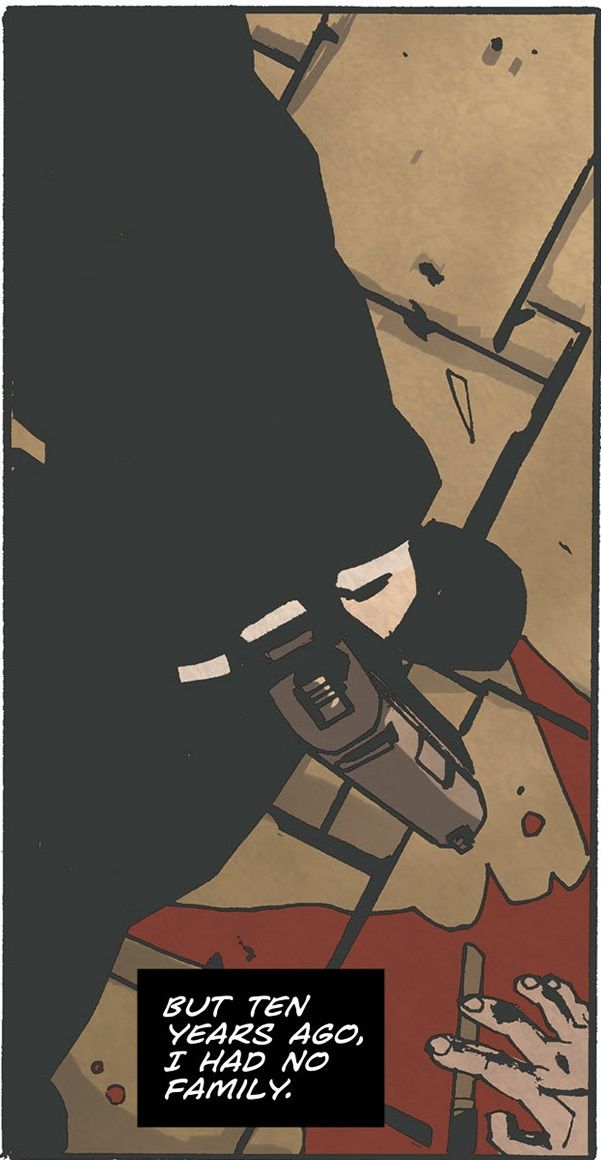Arash Amel is a successful movie screenwriter and that influence shows up clearly in his concept for the new series from Archaia/Boom!, Butterfly, which is scripted by Marguerite Bennett and drawn by Antonio Fuso and Adam Guzowski. When I mention the movie influence I mean the way that the book seems to be built around its high concept story idea. Butterfly has a great elevator pitch: A woman's father dies at a young age and she grows up to become a successful spy in a deep cover program where you learn to trust no one. She seemingly gets burned by her agency and is forced to go on the run with only one person there to guide her - the father she believed died twenty years ago! Come on, you could easily imagine seeing that synopsis for a movie right now, right? That's a fine hook. What interests me about Butterfly, though, is how Bennett goes beyond just that great concept and makes this a unique experience, particularly in the way that she uses a uniquely comic book storytelling device to great effect in the comic.
When the book opens, it seems like it is practically just the storyboards for a film, as Bennett quickly establishes our hero's background before we see her go into action...
Guzowski does an excellent job on that opening sequence. The bit with the bird? That's awesome.
Fuso, by the way, has been killing it for the last few years on IDW's Cobra series of books, which is about the seedier side of the G.I. Joe team, so he was pretty much born to draw a spy book and as soon as I saw his name attached, I knew exactly what I was going to get from him and I got that in spades. He's a fine storyteller and his attention to detail is a huge component of selling the sequence I was telling you about earlier.
After establishing our hero, Bennett and Fuso send her into action, and here's where they do something that is unique to comics - in a series of pages, they demonstrate her doing her job (disguise, hand off, cover, retrieval). Everything going like clockwork. In a film you'd use a freeze frame at each point. You know, like showing her disguise - freeze at "Disguise," etc. However, what's unique about comics is that EVERY panel is technically a "freeze frame," as the reader always decides the speed that they read a comic book. Therefore, you get the effect of a freeze frame without actually having to slow down your story to achieve that effect. It provides a sense of rhythm that is not present in film, as it depends on the reader interacting with the story in just the right way rather than the story dictating its pace to the reader, like a film does with its viewer.
Of course, the first big twist of the book is that when she goes to retrieve the object from her mark, she is shocked to see him killed at the exact moment she makes her move. Her mission has not only now gone FUBAR she now looks like she just assassinated high level diplomat. Her response to that is handled in the same fashion I mention before - direct panels showing every bit of her response, as she is too good of an agent to freak out so she just goes into a sort of automatic routine, as if her mission going nuts and her being screwed are just part of her everyday life. One interesting aspect of this is the fact that as part of her cover, she has a baby with her - so what do you do with a baby when your cover has just been blown? Amel/Bennett tease the reader for a moment with what she might do. It's quite tense.
Another strong sequence is how they handle her coming to terms with the fact that she is now burned. This then leads to the second big twist of the book (I wouldn't spoil any of it except for the fact that Boom! included both twists in their promotional materials for the book, so I suppose they're cool with everyone knowing this), where she learns that her father was a part of the same deep cover program that she is now a part of, and that he is now her only chance of getting out of this alive.
We then go into details about his past, and Fuso and Guzowski excel here, as we need to fill in a lot of details in not a lot of pages, so concise storytelling is at a premium and they use a good deal of signifiers as shorthand to convey the emotions needed, like look how much info you get from this one panel...
By the end of the issue, we now know all we need to know about our two heroes, now we just have to find out how they're going to get out of this situation. This is a clever concept by Amel that the rest of the creative team implement really nicely. Bennett's sense of voice for each character is impressive and Fuso can do this sort of thing in his sleep by now he's so good at it. And, of course, Guzowski ties it all together. I'll certainly be checking to see what happens next.






